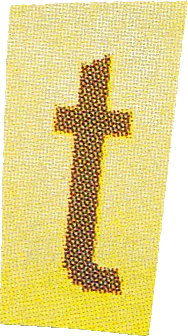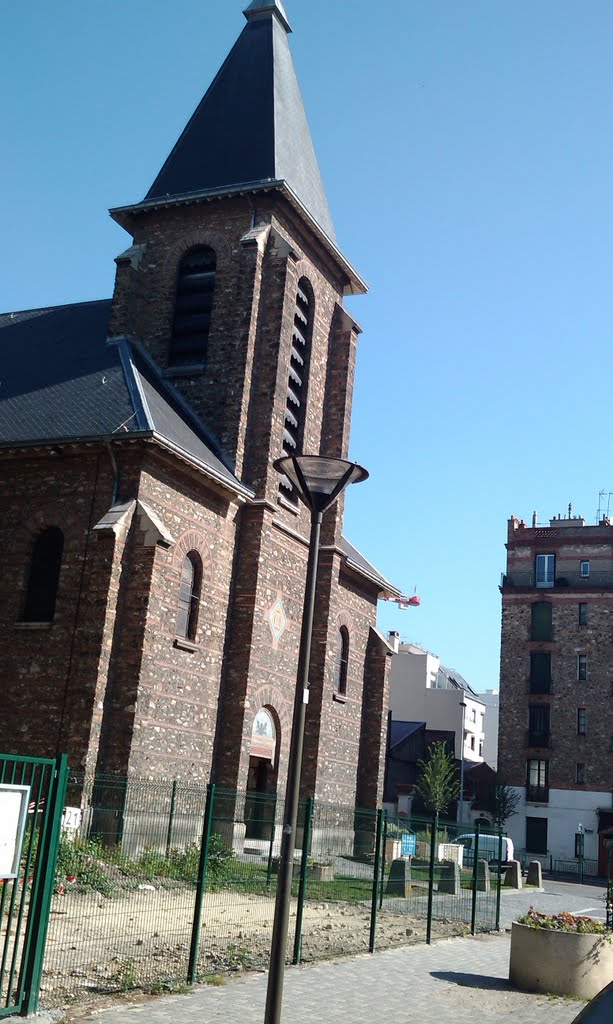
 he first thing you notice when standing in front of the gate surrounding Fazil Manzil, Noor’s family home, is the plaque commemorating her deportation. It says, “Here lived Noor Inayat Khan, 1914 – 1944, Madeleine in the resistance. Shot at Dachau. Radio operator in the Buckmaster network.” Awarded the French Croix de Guerre and the British S. George Cross, she is honored in both France and England.
he first thing you notice when standing in front of the gate surrounding Fazil Manzil, Noor’s family home, is the plaque commemorating her deportation. It says, “Here lived Noor Inayat Khan, 1914 – 1944, Madeleine in the resistance. Shot at Dachau. Radio operator in the Buckmaster network.” Awarded the French Croix de Guerre and the British S. George Cross, she is honored in both France and England.

This week is the anniversary of Noor Inayat Khan’s death in the concentration camp at Dachau. The date is probably 13 September, 1944.
NOOR’S HARP
Upon entering the green gate and going up the stone stairs to the family home, you are then admitted into the drawing room where Pir Vilayat lived with his charming British wife, Mary. Just inside the drawing room, to the left, stood Noor’s harp. Like her brother, Noor also studied with Nadia Boulanger, composing both for harp and piano.

ASIDE
The family had to abandon the house in 1940, and apparently the neighbors carried off the harp. When Pir Vilayat returned for the harp, the neighbors said that they would just as soon keep it. A few family members went back to the house and reclaimed possession with no incident.
NOOR’S STORY
Noor’s story is both tragic and heroic. She was born in Moscow on New Year’s Day. Hazrat Inayat Khan, Noor’s father, the musician who first brought Sufism to the West, was especially drawn to sacred Russian Orthodox music. Due to unrest in Russia, however, early in 1914, the Khan family decided to leave the country. They had difficulty in making their way through the crowds to get on the train to leave Russia. Noor’s father held up the baby, and the crowd let them pass.
Noor’s brother Vilayat was born in England, where the family relocated during WW I. The Khan family eventually settled in France, first in Wissous, and then in Suresnes, where they remained after Inayat Khan died.
When the Nazis occupied France, the family left in 1940 and returned to England. From there, Noor volunteered to be flown back into occupied France to be a radio transmitter to London. Her fluent French made her a perfect candidate. She ultimately was betrayed, perhaps by the sister of another fighter. It is rumored that this sister lost the affections of a desired male to Noor. For turning Noor in, the woman received a handsome sum of money in exchange.
Noor’s brother, Vilayat, was forever heartbroken about the role he felt he played in encouraging the two of them to take on dangerous missions in order to avoid having to kill. He became a minesweeper, and she, a radio transmitter.
TRIBUTE
Slowly, over the years, there’s been an increasing number of tributes to Noor. The first was the creation of a temple of all religions in the garden of Fazil Manzil. The mayor (you remember him) had to give his permission for an unusual structure to be built there. Because it was a memorial for Noor, he allowed it.

Next, there was a street, really a courtyard, named after her in the lower half of Suresnes, a city divided into upper and lower.
The next development was a school named for Noor. A marvelous undertaking, the school carried the long name of L’ecole Noor Inayat Khan “dites” Madeleine. This means the “School Noor Inayat Khan called Madeleine,” so named because that was her code name during the Resistance. We were all invited to the opening ceremony for the school, which was held at la mairie, the mayor’s office. Speeches were made, excellent posters were created by the archivist, and drinks were poured all around. (Unfortunately, you’ll have to go to some trouble to copy and paste the following link into your browser to see the school.)
https://www.google.com/maps/uv?pb=!1s0x47e664df36e7e795%3A0x74bb570db18c5e67!3m1!7e115!4shttps%3A%2F%2Flh5.googleusercontent.com%2Fp%2FA
BIOGRAPHIES
Naturally, books were another form of tribute. I myself was invited to write a biography of Noor by her cousin Mahmood Khan. I did not feel a calling to do that, but I am very interested in the results.
Probably the best known is Madeleine, The Story of Noor Inayat Khan by Jean Overton Fuller, (Reprint Edition, 2019), who lived in London, knew Noor and was a friend of the Inayat Khan family. Fuller went back to do more research on what went wrong in France for the spies. She also wrote Double Webs: Light on the Secret Agents’ War in France (1958.) This book is available for $381. (The first rare book I’d love to read. Another hint to Santa.) Another book followed in 1961 called Double Agent? (unavailable) Rumor had it that there was another betrayal, this time by a double agent, who was ultimately acquitted.
Spy Princess: The Life of Noor Inayat Khan (2008) by Shrabani Basu, an Indian journalist who campaigned for a memorial in honor of Noor Inayat Khan, which resulted in a bust of Noor being erected in her honor at Gordon Square in London. A large sum of money was raised, initiated by the many letters readers sent to Basu, who were so moved by Noor’s story. The tribute is near the house Noor shared with her mother, the address that she scratched on the bottom of a tin cup to indicate she was alive and where she lived.

Recently, Code Name Madeleine: A Sufi Spy in Nazi Occupied Paris (2020) was published by Arthur Magida, an American journalist. This biography was nominated for a Pulitzer Prize. And in particular news for our readers, he has graciously written an independent column about Noor for our post next week. Our first guest blog.
We Rubies Four: The Memoirs of Claire Ray Harper (Khair-un-nisa Inayat Khan). This was written by Noor’s sister, Claire, together with Claire’s son David Ray Harper and published in 2011. Somehow I have not yet read this book, although it is now on order. I remember once we ate dinner with Claire down on a boat restaurant at the bottom of Suresnes in the Bois de Boulogne, docked by the water. Claire sat next to me. Our conversation turned to WW II. “The war ruined our lives,” she said. I think about that sometimes, the way even a childhood spent in the garden of her family’s tenderness and idealism can be rent asunder like that. There’s an old Sufi saying that the person of God is a palace in ruins.
I think that’s why I like Waiting for Godot so well. Everyone in that play, the vagrants, the weird visitors, even Godot, can each be described as a palace in ruins. I admire this saying, being a palace in ruins, because it tells it like it is, so to speak, but with a poetic turn.
FILM
Among some other older films where Noor figures in the story, this film was just released on Amazon Prime: A Call to Spy presents the actual story of Vera Atkins who recruited an American journalist and Noor Inayat Khan into the British war effort (2020).
THE B MINOR MASS
I think the most moving tribute to Noor was at the hands of her brother, Pir Vilayat. He took a group of musicians and singers to Dachau and conducted there the B Minor Mass of Johann Sebastian Bach. I can only imagine the quiet landscape, with its dreadful past, the powerful sonorous Mass, and the dark weather, except for the ray of sunlight that appeared through the clouds, just at the climax of the piece. “Do you think that’s a sign?” Pir asked me. Noor’s name is the Arabic word for light.